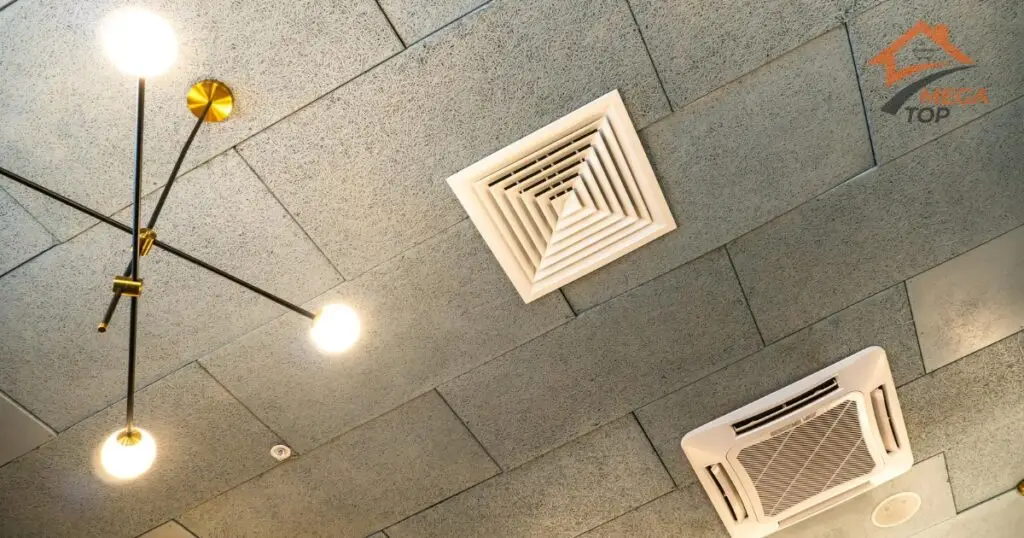Why Is a Bathroom Exhaust Fan Important?
Bathroom exhaust fans are essential for maintaining a healthy, functional bathroom environment. They remove excess moisture, prevent odors, and help protect your home from damage caused by humidity.
The Role of Exhaust Fans
- Moisture Removal: Exhaust fans prevent condensation, which can lead to mold and mildew.
- Improved Air Quality: They expel odors and stale air, keeping your bathroom fresh.
- Structural Protection: Reducing moisture protects walls, ceilings, and fixtures from water damage.
Signs Your Fan Is Not Working Properly
- Persistent foggy mirrors after showers.
- Lingering odors or stale air in the bathroom.
- Visible signs of mold or mildew near vents.
Common Causes of Bathroom Exhaust Fan Failure
Understanding the reasons behind a failing fan can help you decide whether to repair or replace it.
Electrical Issues
Faulty wiring or a blown circuit can cause your fan to stop working entirely.
- Symptoms: The fan doesn’t turn on, or the switch feels loose.
- Solution: Check the circuit breaker or consult an electrician for wiring issues.
Motor Problems
The motor is the heart of the fan, and any malfunction can render it inoperable.
- Symptoms: Unusual noises, reduced airflow, or the fan not spinning.
- Solution: A burned-out motor typically requires replacement.
Blockages and Clogs
Over time, dust, lint, and debris can accumulate, restricting airflow.
- Symptoms: Reduced suction power or louder operation.
- Solution: Regular cleaning of the fan blades and vent ducts.
Aging or Worn-Out Components
Like any appliance, bathroom exhaust fans have a limited lifespan.
- Symptoms: Frequent malfunctions or decreased performance despite maintenance.
- Solution: Replacement is often the best option for an older fan.
How to Troubleshoot a Faulty Bathroom Fan
Before considering a replacement, try these troubleshooting steps.
Initial Checks
- Ensure the fan switch is functional and the circuit breaker hasn’t tripped.
- Check if the fan is properly connected to its power source.
Cleaning the Fan
- Tools Needed: Screwdriver, vacuum with a brush attachment, and a damp cloth.
- Steps:
- Turn off power to the fan.
- Remove the cover and clean dust from the blades and motor.
- Clear any debris from the vent ducts.
Testing the Motor
- If the fan is clean but still not working, test the motor with a multimeter to check for continuity.
- A lack of response often indicates motor failure, requiring replacement.
When to Consider Bathroom Fan Replacement
Replacing your bathroom fan may be the best option if troubleshooting doesn’t resolve the issue.
Signs Replacement Is Necessary
- Persistent problems, such as loud noises or poor ventilation.
- Complete failure of the motor or electrical components.
- The fan is over 10-15 years old and no longer meets your needs.
Benefits of Upgrading
- Energy Efficiency: Modern fans consume less power and operate more efficiently.
- Quieter Operation: Advanced models are designed for near-silent performance.
- Enhanced Features: Newer fans may include built-in lights, humidity sensors, or timer functions.
Professional Fan Replacement vs. DIY
Deciding between DIY replacement and professional installation depends on your skill level and the complexity of the job.
Pros and Cons of DIY Replacement
- Pros:
- Lower cost, as you save on labor fees.
- Suitable for straightforward replacements.
- Cons:
- Requires tools and knowledge of electrical wiring.
- Risk of improper installation.
Why Hire a Professional
- Expertise: Professionals ensure the fan is installed safely and correctly.
- Time-Saving: A technician can complete the job quickly, minimizing disruptions.
- Warranty: Many professionals offer guarantees on their work, providing peace of mind.
Tips for Maintaining Your Bathroom Exhaust Fan
Regular maintenance can prolong the lifespan of your exhaust fan and improve its performance.
Routine Cleaning
- Clean the fan cover, blades, and vent ducts every 3-6 months to prevent dust buildup.
- Use a vacuum or damp cloth for safe cleaning.
Regular Inspections
- Check for signs of wear, such as unusual noises or reduced airflow.
- Inspect wiring and connections annually to ensure safe operation.
By addressing the underlying causes of a faulty fan and knowing when to replace it, you can maintain optimal bathroom ventilation. Contact a professional today for expert installation and advice!
FAQ
Most fans last 10-15 years with proper maintenance.
Small issues like cleaning clogs or fixing wiring can be repaired, but motor failure often necessitates replacement.
DIY replacement costs $50-$150, while professional installation typically ranges from $200 to $500.
Common causes include electrical issues, motor burnout, or clogged vents.
Yes, modern fans are designed for quieter operation, better ventilation, and lower energy consumption.





